French Country Kitchens Fresh Take
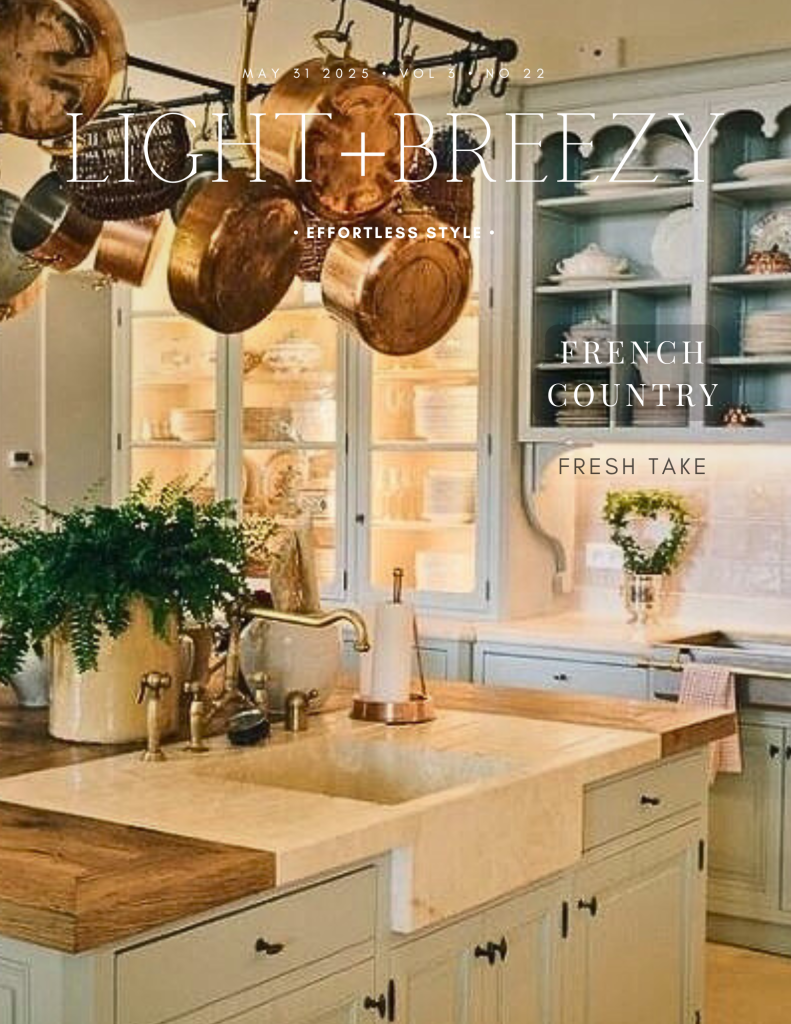
The Soul of French Country Kitchens
There’s something utterly magnetic about a French country kitchen that makes you want to linger over morning coffee until it becomes afternoon wine. Perhaps it’s the way weathered limestone counters tell stories of countless meals prepared with love, or how copper pots hanging from wrought iron hooks catch the light like burnished gold. This isn’t just a design aesthetic—it’s a philosophy of living that transforms the most utilitarian space in your home into its beating heart.
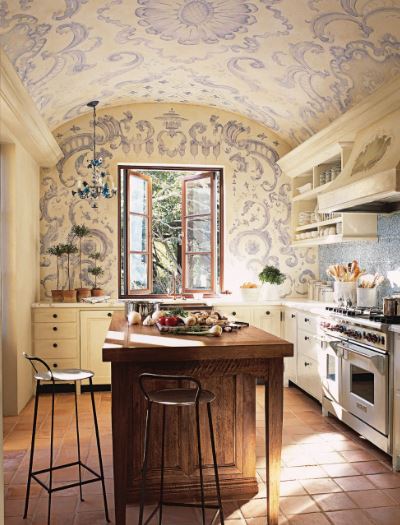
The French country kitchen emerged from the farmhouses of Provence, Normandy, and the Loire Valley, where families gathered not just to eat, but to truly live. In these rural homes, the kitchen served as command center, social hub, and sanctuary all at once. Unlike the formal salons reserved for special occasions, the kitchen welcomed muddy boots, animated conversations, and the comfortable chaos of daily life. This authentic functionality bred a design sensibility that prioritized warmth over formality, character over perfection.
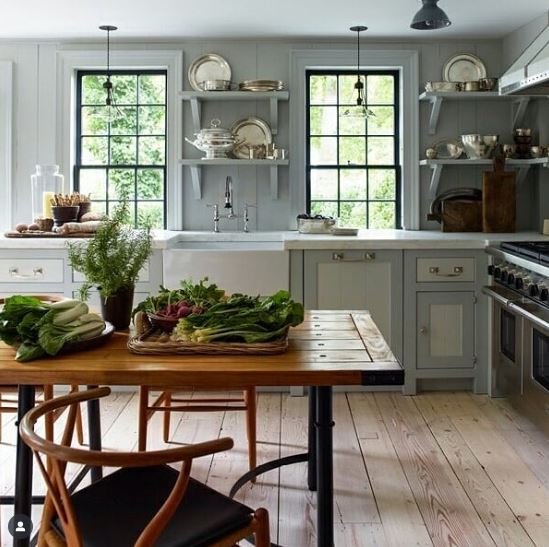
What makes this style so enduringly appealing is its rejection of sterile modernism in favor of something more soulful. French country kitchens embrace the beautiful imperfection of handcrafted elements—the slight irregularity of hand-thrown pottery, the gentle patina on aged brass hardware, the organic curves of a farmhouse sink worn smooth by generations of use. These aren’t flaws to be hidden, but stories to be celebrated.

The color palette draws directly from the French countryside, where lavender fields meet sun-baked terracotta and morning mist settles over sage-green vineyards. Soft blues reminiscent of faded denim work alongside warm creams and gentle grays, while pops of muted yellow bring to mind fields of sunflowers swaying in a Mediterranean breeze. These aren’t the bold, saturated colors of modern design, but the gentle, weathered hues that develop when pigments age gracefully under centuries of natural light.
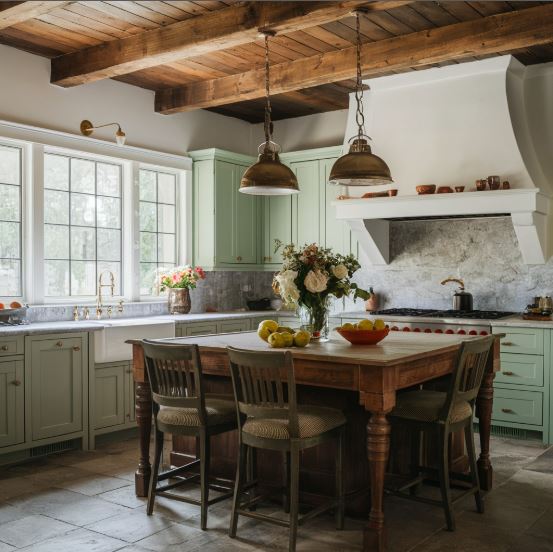
Natural materials form the foundation of authentic French country style. Limestone and travertine floors develop a beautiful patina over time, while reclaimed wood beams overhead add architectural gravitas and connect indoor spaces to the rustic landscape beyond. Stone countertops, whether in creamy limestone or mottled granite, provide both durability and organic beauty that synthetic materials simply cannot replicate. Even the metals chosen—wrought iron, aged brass, and copper—develop their own unique character through oxidation and wear.
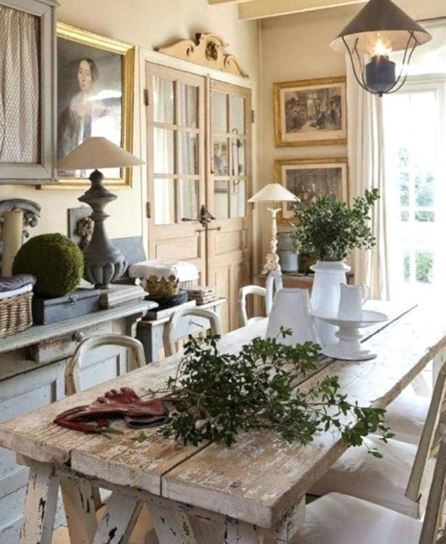
The furniture in a French country kitchen tells its own story of generations past. Open shelving displays collections of ironstone pitchers and vintage copper molds, while a well-worn harvest table serves as both prep space and gathering spot. Chairs might be mismatched—a rush-seated ladder-back beside a painted Windsor—because authenticity trumps uniformity. A vintage armoire, perhaps originally destined for a bedroom, finds new life storing linens and serving pieces, its weathered paint and original hardware adding layers of history to the space.
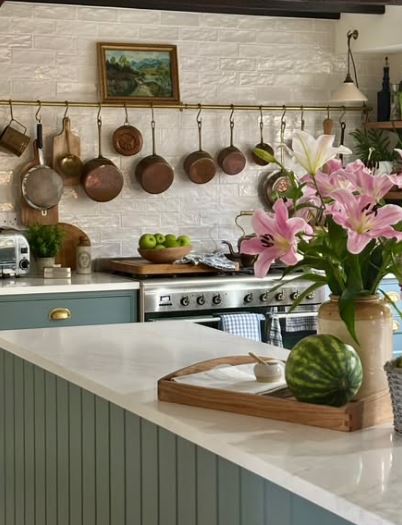
This approach to design psychology taps into something profound in our collective consciousness. In our increasingly digital world, we crave the tangible, the handmade, the authentic. French country kitchens offer an antidote to the cold efficiency of contemporary design, creating spaces that feel lived-in from day one. They remind us that imperfection can be beautiful, that age adds value rather than diminishing it, and that the best gatherings happen in spaces that prioritize comfort over formality.
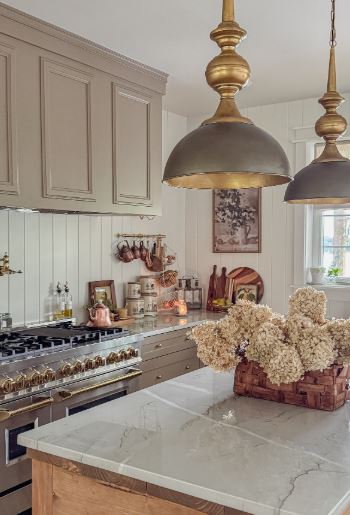
The lighting in these kitchens plays a crucial role in creating their signature ambiance. Rather than harsh overhead fixtures, French country style favors layered illumination—wrought iron chandeliers casting gentle shadows, under-cabinet lighting highlighting the grain in butcher-block counters, and perhaps a vintage brass sconce flanking a rustic range hood. Candles in hurricane glasses or simple pottery holders add warmth during evening gatherings, their flickering light enhancing the romance inherent in this design philosophy.
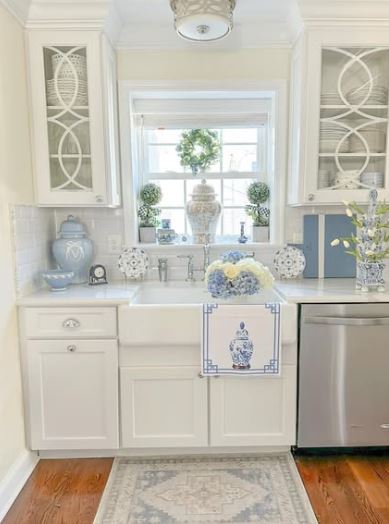
Textiles bring softness to the hard surfaces, but always in service of function as well as beauty. Linen curtains in natural tones filter harsh sunlight while maintaining the connection to the outdoors. Cotton dish towels in classic blue and white stripes hang from simple hooks, ready for use but beautiful in their simplicity. A vintage grain sack might be repurposed as a runner across that harvest table, its faded lettering adding authentic European charm.
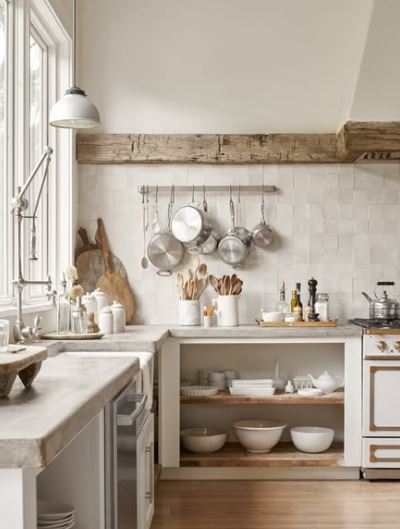
The magic happens in the details that can’t be bought—the way morning light streams through multipaned windows onto worn wooden counters, creating geometric patterns that shift throughout the day. It’s in the casual arrangement of fresh herbs in a vintage canning jar, or the way a well-seasoned cast-iron pan resting on an old wooden cutting board becomes an inadvertent still life.
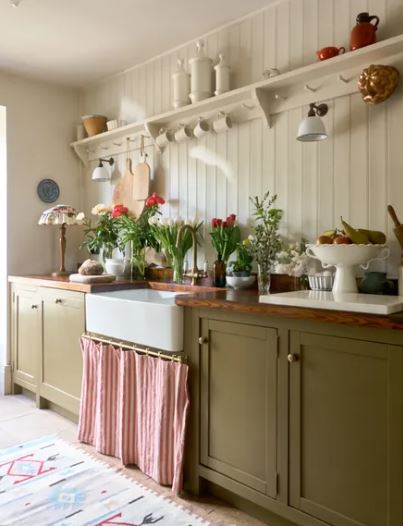
What French country style understands that many contemporary approaches miss is that a kitchen should feel like it evolved organically over time. Rather than everything matching perfectly, elements should relate harmoniously—the blue of the painted island echoing the pattern in the vintage pottery collection, or the grain in the ceiling beams complementing the butcher-block counters.
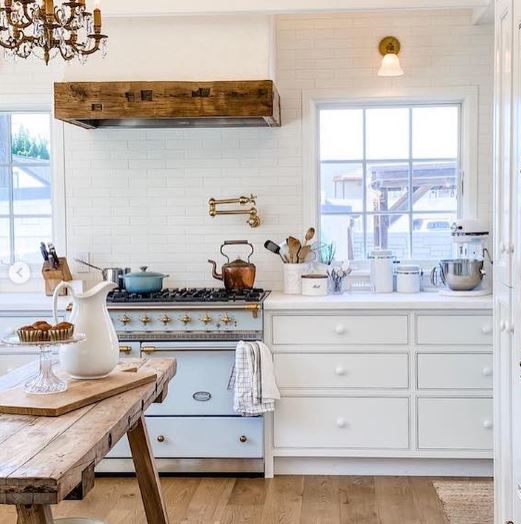
This design philosophy extends beyond mere aesthetics to embrace a more mindful approach to daily living. French country kitchens encourage slow mornings with proper coffee and fresh pastries, unhurried meal preparation using seasonal ingredients, and long evenings spent around the table with family and friends. They’re spaces designed for the rituals that make life meaningful—kneading bread by hand, preserving summer’s harvest, or simply gathering to share the day’s stories over a home-cooked meal.
The enduring appeal of French country kitchens lies in their ability to make us feel instantly at home, as if we’ve inherited not just a space, but a way of life that values simplicity, authenticity, and the profound pleasure found in everyday moments shared with those we love.
